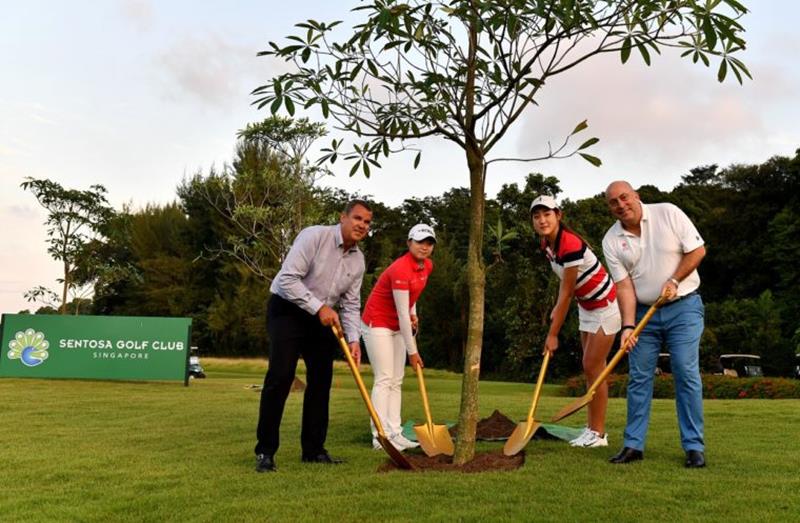Last year, I have already mentioned Sentosa Golf Club‘s Singapore Open Agronomy Volunteer Programme. Last week they were the host of the first-ever Women’s Amateur Asia-Pacific Championship at their new Tanjong Course (completed in November 2016). The Thai star Atthaya Thitikul (15) won the game.
By winning the tournament at Sentosa Golf Club, she earned a place in the field for two Major Championships, the 2018 ANA Inspiration and Ricoh Women’s British Open, as well as the HSBC Women’s World Championship, to be held on the New Tanjong from March 1-4.

What is more important for me is to see another golf tournament and golf club that pays attention to sustainability.
Sentosa Golf Club & #KeepItGreen sustainability campaign
During the event club General Manager and Director of Agronomy, Andrew Johnston, joined competitors and representatives of The R&A unveiled “The Champions Grove”, a legacy project celebrating the club’s hosting of the inaugural event and its dedication to sustainability.
They planted five Pulai trees, native to Singapore, positioned adjacent to the 7th hole. The Pulai tree can grow up to 40 meters tall. The club said that these trees will symbolize their status as one of the world’s most environmentally-friendly venues and complementing its recently-launched #KeepItGreen campaign.

Through the installation of six interconnected lakes across the new course, the club has become completely self-sufficient when it comes to irrigation.
What I have not heard from them is what are they doing for water conservation. It would be interesting to know how they intend to deal with hydrophobicity and improve soil functionality for enhanced turf health and playability.
The usage of wetting agents to treat golf turf is today (other popular techniques are hand watering + increasing no-mow acres, use of irrigation scheduling techniques and mulching landscape beds, and adjusting fertilizer practices) is a standard practice of golf turf managers to manage water-repellent soil.
I think we can all agree that severity of soil hydrophobicity varies across the green. GCSAA recommends treating the entire green with the wetting agent since it can improve root growth.
The real challenge is how to retain the water for a longer period of time, especially in areas exposed to high evapotranspiration rates. This is why I like such solutions like Qualibra that can increase water availability and lower plant stress.
At the same time, when we are using recycled water, we should also pay attention to the quality of the irrigation water. The quality of the water is affecting the growth, appearance, and health of our golf turf.
The Sentosa Golf Club should not stop here, but to focus on these areas as well (see Waste Management Phoenix Open case study):
- Planning,
- Site Protection,
- Procurement,
- Resource Management,
- Access and Equity,
- and Community Legacy.
